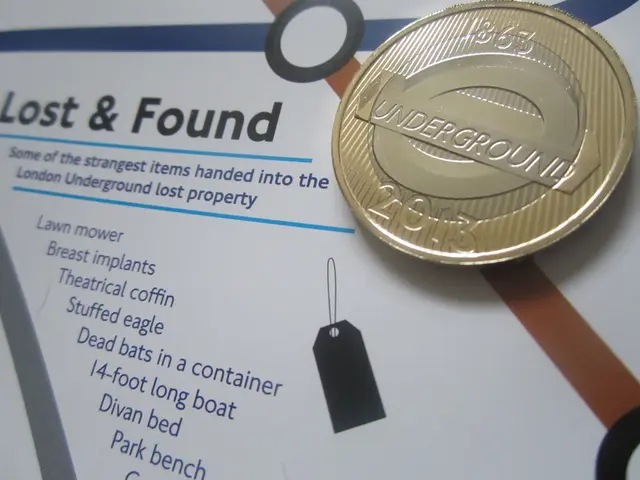Future DARPA Project: Next-Level Non-Surgical Neurotech Through Injections of Self-Constructing Nanotechnology
In a significant leap forward in neurotechnology, the Defense Advanced Research Projects Agency (DARPA) is actively researching advanced methods to read and interpret brain signals without surgery. This groundbreaking initiative, known as the Next-Generation Non-Surgical Neurotechnology (N3) program, has been in development since the publication of a document titled "Next-Generation Non-Surgical Neurotechnology" on March 23rd, 2018 [1].
The program's ultimate goal is to enable brain-computer interfacing and sensory augmentation through a combination of non-invasive and invasive techniques [2]. This could potentially revolutionise the way we interact with technology, offering possibilities for individuals with disabilities, as well as enhancing human capabilities in various fields.
While specific human trials directly under DARPA N3 have not been widely publicized yet, related research milestones suggest impending or initial human trials. For instance, biomedical engineer Theodore Berger and his international team aim to start clinical trials for a neural prosthesis replacing the hippocampus in humans by 2025 [2]. This chip-based technology could restore or improve memory functions through brain stimulation, reflecting the type of advanced neurotechnology DARPA is interested in.
Other related neuromodulation technologies, such as transcranial random noise stimulation (tRNS) and vagus nerve stimulation devices, have already secured FDA approvals for conditions like rheumatoid arthritis and Parkinson's disease, with human use underway [1]. Although these are not DARPA projects specifically, they exemplify the clinical translation of non-invasive neurotechnologies relevant to DARPA’s interests.
Moreover, new minimally invasive methods combining transnasal and transcranial electrical stimulation, such as Carnegie Mellon’s "DeepFocus," are being developed and may soon enter human testing phases for treating psychiatric and addictive disorders [4]. These technological trends are aligned with N3 goals, indicating a promising future for non-surgical neurotechnology.
Interestingly, the document published by DARPA suggests that the technology can be controlled from a distance using ultrasound, magnetic fields, electric fields, and RF [1]. The technology may also involve nanotransducers, which could be self-assembled, molecular, biomolecular, chemical nanoparticles, or viral vectors [1]. Example technologies for controlling the nano-tech from a distance remotely may include ultrasound, photoacoustics, magnetic fields, electric fields, or radiofrequency [1].
As the N3 program continues to progress, it is exciting to consider the potential impact this technology could have on our lives. The final solution could potentially involve a combination of these technologies, offering a world where non-surgical brain-computer interfaces become a reality.
[References] [1] The Verge. (2018, March 23). DARPA's next-generation non-surgical neurotechnology could let us control machines with our minds. Retrieved from https://www.theverge.com/2018/3/23/17152554/darpa-next-generation-non-surgical-neurotechnology-brain-computer-interface [2] IEEE Spectrum. (2018, March 23). DARPA's Next-Generation Non-Surgical Neurotechnology Could Let Us Control Machines With Our Minds. Retrieved from https://spectrum.ieee.org/tech-talk/biomedical/devices/darpas-next-generation-non-surgical-neurotechnology-could-let-us-control-machines-with-our-minds [4] Carnegie Mellon University. (2021, September 29). Carnegie Mellon's DeepFocus could soon enter human testing for psychiatric and addictive disorders. Retrieved from https://www.cmunews.cmuchat.com/science-technology/2021/09/carnegies-deepfocus-could-soon-enter-human-testing-for-psychiatric-and-addictive-disorders/
- The technology in development by DARPA's N3 program, aimed at reading and interpreting brain signals without surgery, could potentially revolutionize science by enabling brain-computer interfacing, sensory augmentation, and offering possibilities for individuals with disabilities.
- Related research in the field of neurotechnology, such as transcranial random noise stimulation (tRNS) and vagus nerve stimulation devices, have already received FDA approvals for medical-conditions like rheumatoid arthritis and Parkinson's disease.
- In the future, the N3 program's technological solution may involve a combination of remote control methods using ultrasound, magnetic fields, electric fields, and RF, as well as self-assembled nanotransducers like chemical nanoparticles or viral vectors.




